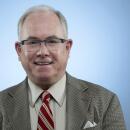Study: In some areas, risky loans punished the rich more than the poor
- Share via
This article was originally on a blog post platform and may be missing photos, graphics or links. See About archive blog posts.
Five years into the housing bust, are rich or poor homeowners more likely to suffer foreclosure?
It all depends on which part of the country you’re in, according to a Center for Responsible Lending study.
Low- and moderate-income borrowers have been most affected in cities such as Detroit, Cleveland and St. Louis, where weak economies meant home prices didn’t rise much even while much of the nation was caught up in the housing bubble, the nonprofit CRL said.
However, in areas that had strong housing appreciation before the collapse, such as California and Nevada, the opposite is true. In these areas, middle- and higher-income borrowers have been most likely to fall into foreclosure, according to CRL’s study of 27 million mortgages over five years.
The explanation, CRL said Thursday, is that higher-income borrowers in expensive boom states wound up with a disproportionate number of high-risk loans, as did the lower-income residents of cities with weak economies and housing markets.
The rich borrowers were stretching to buy homes by using supposedly prime adjustable-rate loans requiring interest-only payments at first, or pay-option mortgages that allowed them to pay so little that their loan balance rose instead of fell.
Overall, the CRL said, there was remarkably little difference in foreclosure rates between low- and high-income people who took out home loans from 2004 to 2008. Among lower-income borrowers in that group, 15.9% had been foreclosed on or were seriously delinquent (meaning 60 days or more in arrears) by February 2011, the CRL study found.
Among middle-incomes borrowers, 14.7% fell into those categories, with 14.6% of high-income borrowers in the same straits.
But those slight differences contrasted with big gaps when researchers sorted troubled borrowers by type of housing market.
In weak markets, more than 10% of low-income borrowers had lost their homes to foreclosure, while less than 4% of higher-income borrowers had homes repossessed.
In the topsy-turvy world of the boom housing markets, more than 9% of higher-income borrowers had lost their homes, compared to less than 4% of low-income homeowners.
The study also found that:
-- Among homeowners who received loans from 2004 to 2008, 2.7 million households, or 6.4%, had lost their homes to foreclosure as of February 2011. Another 8.3%, or 3.6 million households, were at serious risk, defined as in the foreclosure process or more than 60 days past due on their mortgages.
-- The majority of people affected by foreclosures have been non-Latino white families. However, African American and Latino borrowers are more than twice as likely to lose their home to foreclosure as non-Latino white households -- 25% compared to 12%.
-- Racial and ethnic disparities in foreclosures persist even among higher-income groups. About 10% of higher-income African American borrowers and 15% of higher-income Latino borrowers have lost their home to foreclosure, compared with 4.6% of higher-income non-Latino white borrowers, the CRL said.
RELATED:
Fewer home loans going bad but foreclosures on rise
Many Americans say they will have to work until they’re 80
Construction of new homes increases, except in West
-- E. Scott Reckard
